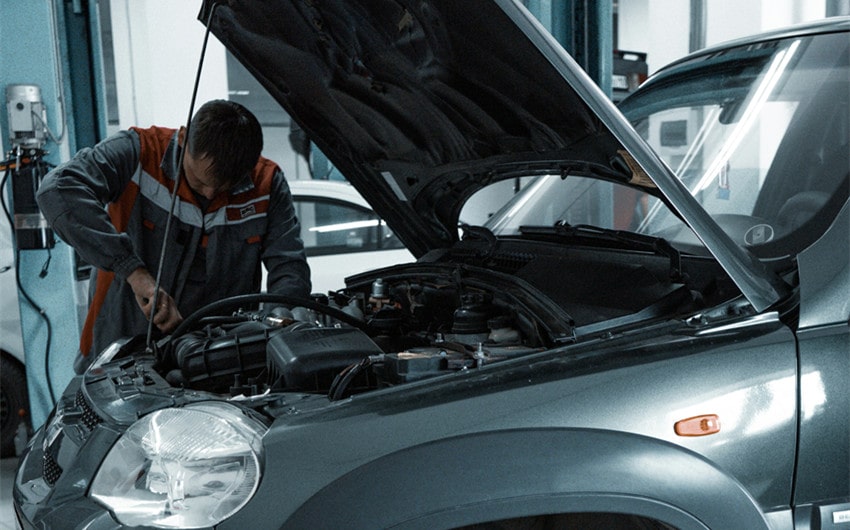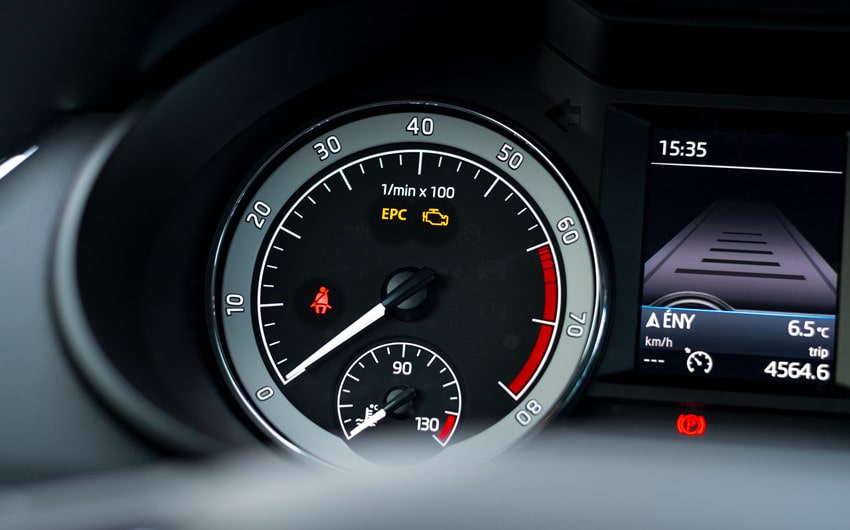5 Common Causes of EPC Car Light Activation Explained
Have you ever been driving and suddenly noticed a strange light on your dashboard? The EPC car light can be one of those unexpected surprises. It’s not just another warning light; it indicates something may be wrong with your vehicle’s electronic power control system.
Understanding what causes this light to come on and how to address it can save you time, money, and stress. In this article, we’ll dive into common reasons behind the EPC light, how to diagnose the problem, and possible fixes to keep your car running smoothly.
What is the EPC Light?

The EPC light, which stands for Electronic Power Control, is a warning indicator found on the dashboard of many modern vehicles, particularly those manufactured by Volkswagen, Audi, and other brands within the VW Group. This light is part of the car’s onboard diagnostic system, designed to monitor and manage the electronic systems that control your engine and other critical components.
When the EPC light illuminates, it signifies that there is an issue with your vehicle’s throttle system or related components. This can include problems with the throttle body, throttle position sensor, or even issues with the engine control unit (ECU). The light may come on due to a wide range of issues, from minor glitches to more serious faults that require immediate attention.
Common Causes of EPC Light Activation
1. Faulty Throttle System
A faulty throttle system is a common cause of the EPC light activating. The throttle body, which controls the amount of air entering the engine, can become dirty or damaged, leading to poor acceleration and erratic idling.
Additionally, the throttle position sensor, which monitors the position of the throttle and sends information to the ECU, can malfunction. This results in incorrect data being sent to the ECU, causing the EPC light to come on and leading to symptoms such as hesitation when accelerating and reduced engine performance.
2. Issues with the Engine Speed Sensor
The engine speed sensor plays a crucial role in measuring the speed at which the engine is running and relaying this information to the ECU. When this sensor fails, the ECU cannot accurately manage engine performance, leading to the EPC light activating.
Symptoms of a failing engine speed sensor include erratic engine behavior, stalling, and difficulty starting the vehicle. This issue disrupts the engine management functions, making it essential to address it promptly.
3. Brake Light Switch Malfunction
The brake light switch is responsible for activating the brake lights when you press the brake pedal and sending a signal to the ECU that the brakes are being applied. If this switch malfunctions, the ECU might receive incorrect signals, triggering the EPC light.
You may notice that your brake lights do not come on when braking or that they stay on continuously, indicating a problem with the brake light switch that needs to be fixed to ensure safe driving.
4. Problems with the ABS
The ABS system is linked to the vehicle’s overall electronic control system, and issues within the ABS can sometimes trigger the EPC light. Common ABS problems include faulty wheel speed sensors, a malfunctioning ABS module, or damaged wiring.
These issues can lead to the ABS light coming on, unusual brake behavior, or reduced braking efficiency. Since the ABS system is crucial for safe braking, addressing these problems promptly is essential to maintain vehicle safety.
5. Wiring and Connection Issues
Modern vehicles rely heavily on electronic systems, making wiring and connection issues a common cause of the EPC light activating. Damaged or corroded wires, loose connections, or faulty connectors can disrupt the communication between various components, leading to intermittent or complete failure of signal transmission.
This can result in a wide range of symptoms, from minor electrical glitches to significant performance issues, all of which require attention to ensure the vehicle’s reliability and safety.
How to Diagnose EPC Light Issues

When the EPC light illuminates on your dashboard, diagnosing the underlying problem is crucial for determining the appropriate fix. Here’s a detailed guide on how to diagnose EPC light issues:
Using an OBD-II Scanner
An OBD-II scanner is an essential tool for diagnosing EPC light issues. This device plugs into your car’s OBD-II port, usually located under the dashboard. Once connected, it reads the trouble codes stored in your vehicle’s ECU.
- Step-by-Step Process:
- Connect the Scanner: Plug the OBD-II scanner into the OBD-II port.
- Turn on the Ignition: Switch your car’s ignition to the “On” position without starting the engine.
- Read the Codes: Follow the scanner’s instructions to read the trouble codes. These codes will give you specific information about what triggered the EPC light.
- Interpret the Codes: Use the scanner’s manual or an online database to interpret the codes. This will help you understand which component or system is malfunctioning.
Steps for a Basic DIY Diagnosis
If you don’t have access to an OBD-II scanner, there are still several steps you can take to diagnose EPC light issues:
- Visual Inspection: Start by inspecting visible components under the hood. Look for loose or disconnected wires, damaged hoses, or any obvious signs of wear and tear.
- Check the Throttle Body: A dirty or malfunctioning throttle body is a common cause of EPC light activation. Inspect the throttle body for buildup or damage and clean it if necessary.
- Inspect the Brake Light Switch: Ensure that the brake light switch is functioning correctly. Check if the brake lights illuminate when the pedal is pressed and turn off when released.
- Examine the Engine Speed Sensor: Look for signs of damage or wear on the engine speed sensor and its connections. Replacing a faulty sensor can often resolve EPC light issues.
- Test the ABS System: If you suspect ABS issues, check the wheel speed sensors and wiring. Look for any signs of damage or disconnection.
When to Seek Professional Help
While DIY diagnosis can be helpful, certain situations require professional intervention:
- Complex Electrical Issues: If the EPC light is caused by wiring or connection problems that are not easily identifiable, it’s best to consult a professional mechanic.
- Advanced Diagnostics: Some issues may require advanced diagnostic equipment or expertise that only a professional can provide.
- Persistent Problems: If the EPC light remains on after attempting basic fixes, a professional diagnosis can ensure that the root cause is correctly identified and addressed.
Additional Diagnostic Tools and Techniques
- Multi-Meter Testing: A multi-meter can be used to test electrical components and circuits for continuity, voltage, and resistance. This is useful for pinpointing issues with sensors and wiring.
- Smoke Testing: This technique involves introducing smoke into the intake system to identify leaks that may affect the throttle system and trigger the EPC light.
- Software Updates: Sometimes, the EPC light may come on due to outdated software in the vehicle’s ECU. A professional mechanic can update the software to the latest version, which may resolve the issue.
Possible Fixes for EPC Light Problems

Once you’ve diagnosed the cause of the EPC light activation, the next step is to address the underlying issue. Here are some possible fixes for common EPC light problems:
1. Throttle Body Cleaning or Replacement
The throttle body controls the airflow into the engine, and if it becomes dirty or damaged, it can cause the EPC light to activate.
- How to Clean the Throttle Body:
- Tools Needed: Throttle body cleaner, a clean cloth, and basic hand tools.
- Steps: Disconnect the battery, remove the air intake hose, and locate the throttle body. Spray the cleaner onto the throttle body, focusing on the valve and surrounding areas. Use the cloth to wipe away any residue.
- When to Replace: If cleaning doesn’t resolve the issue, or if there are signs of mechanical damage, the throttle body may need to be replaced.
2. Replacing the Engine Speed Sensor
The engine speed sensor provides crucial data to the ECU, and a faulty sensor can trigger the EPC light.
- Steps to Replace the Sensor:
- Tools Needed: A new engine speed sensor, wrenches, and possibly a jack and jack stands.
- Process: Locate the engine speed sensor (usually near the crankshaft). Disconnect the electrical connector and remove the sensor using the appropriate tool. Install the new sensor and reconnect the electrical connector.
- Costs Involved: Replacing an engine speed sensor is relatively inexpensive, typically ranging from $50 to $150 for the part, with additional labor costs if performed by a mechanic.
3. Fixing or Replacing the Brake Light Switch
The brake light switch is integral to your vehicle’s braking system and can affect the EPC light.
- Simple Fixes: Sometimes, the switch may just need adjustment. Ensure that the switch is properly aligned with the brake pedal and that it activates the brake lights when the pedal is pressed.
- When Replacement is Necessary: If the switch is broken or fails to respond to adjustments, it needs to be replaced.
- Tools Needed: A new brake light switch and basic hand tools.
- Process: Locate the switch near the brake pedal. Disconnect the electrical connector, remove the old switch, and install the new one. Reconnect the electrical connector and test the brake lights.
4. Addressing ABS Issues
Since the ABS system is linked to the EPC light, addressing ABS-related issues is crucial.
- Common Repairs for ABS:
- Wheel Speed Sensors: These sensors can fail or get dirty. Cleaning or replacing them can often fix ABS issues.
- ABS Module: A faulty ABS module can trigger both ABS and EPC lights. Professional repair or replacement is typically necessary.
- Damaged Wiring: Inspect and repair any damaged wiring connected to the ABS system.
5. Repairing Electrical Connections
Faulty wiring or poor electrical connections can lead to the EPC light being activated.
- How to Check for Wiring Issues:
- Visual Inspection: Look for visible signs of wear, corrosion, or disconnection in the wiring harnesses and connectors.
- Use a Multi-Meter: Test for continuity, voltage, and resistance in the electrical circuits related to the throttle system, engine speed sensor, and ABS.
- Professional Repair Options: If the wiring issues are complex or hard to locate, a professional mechanic can use advanced diagnostic tools to identify and fix the problem.





